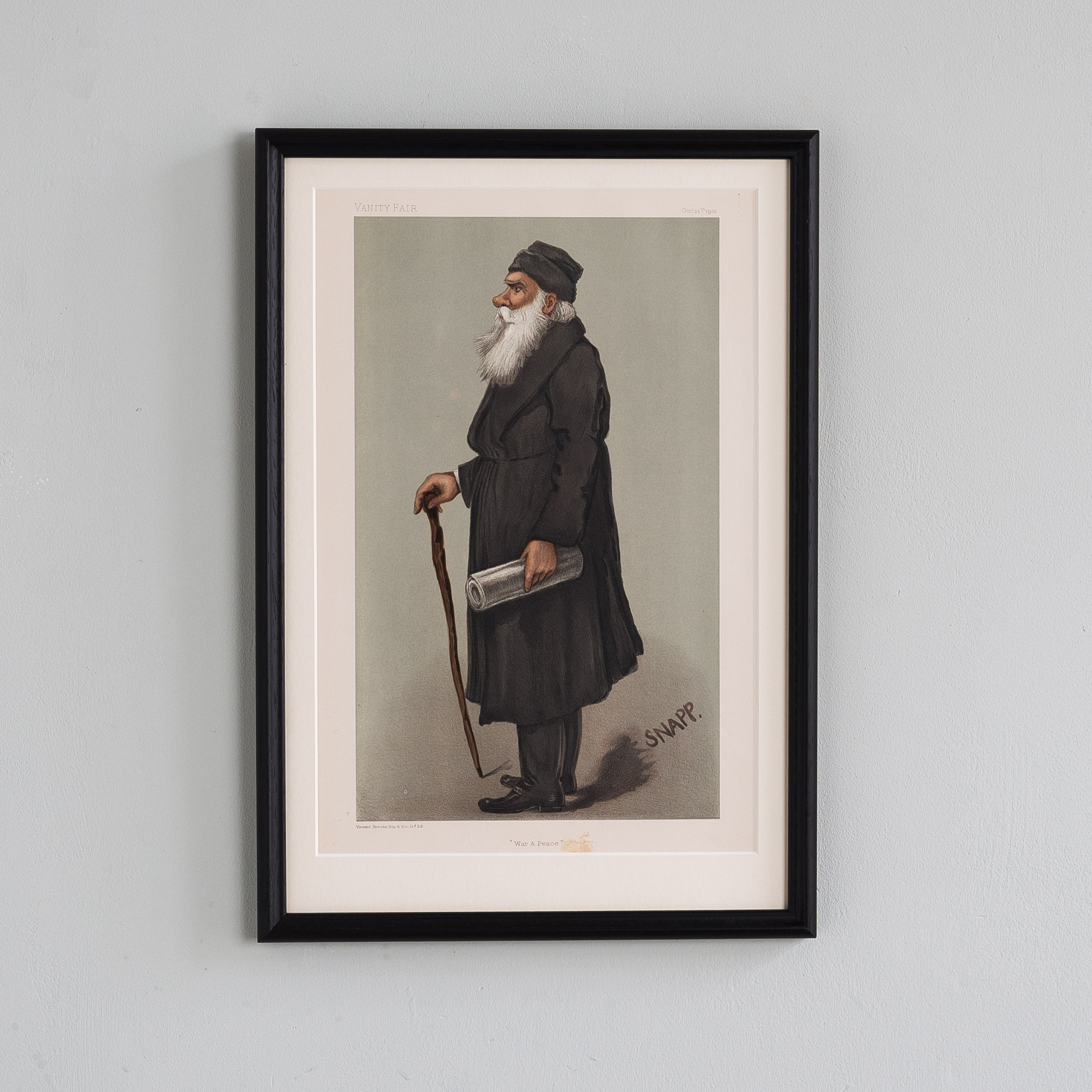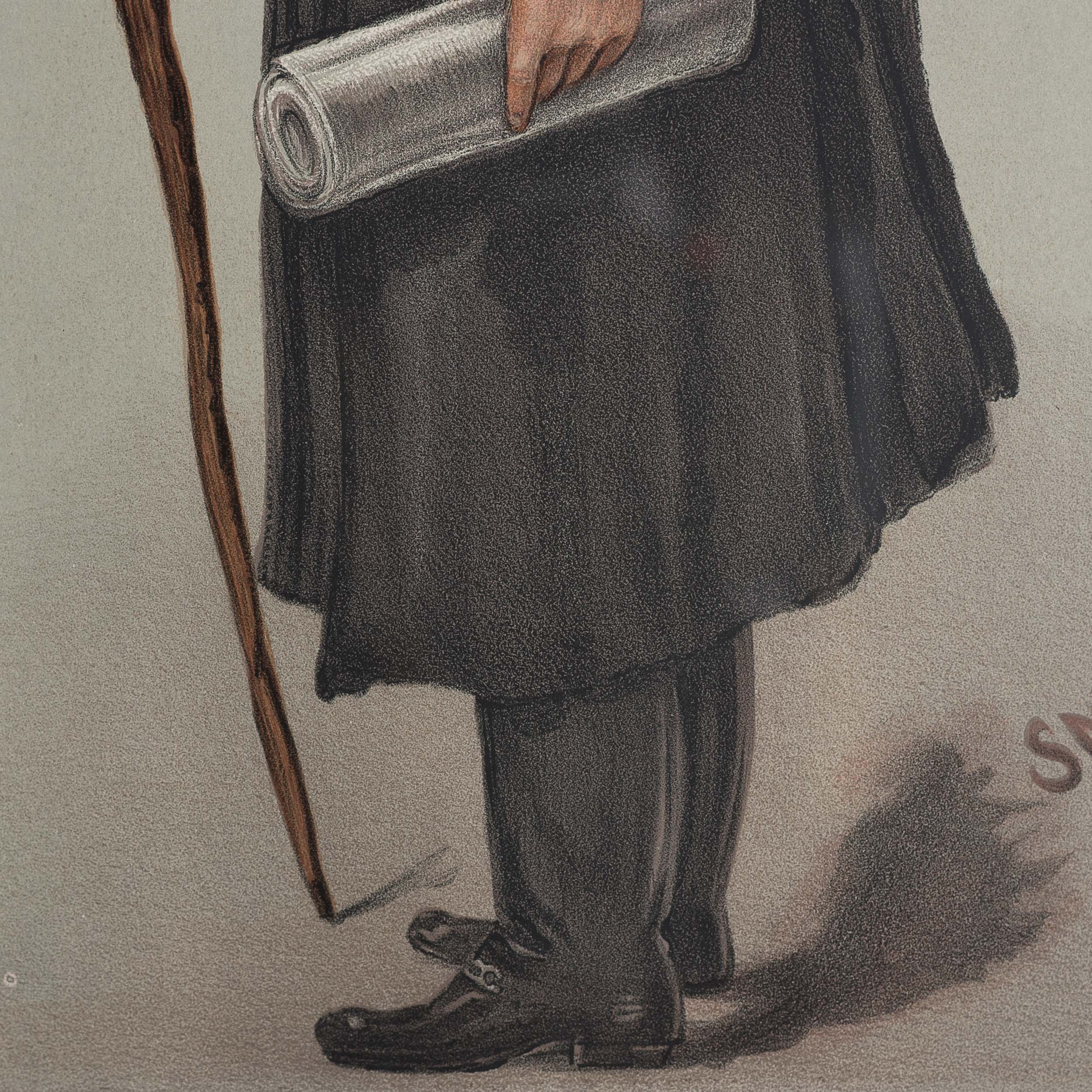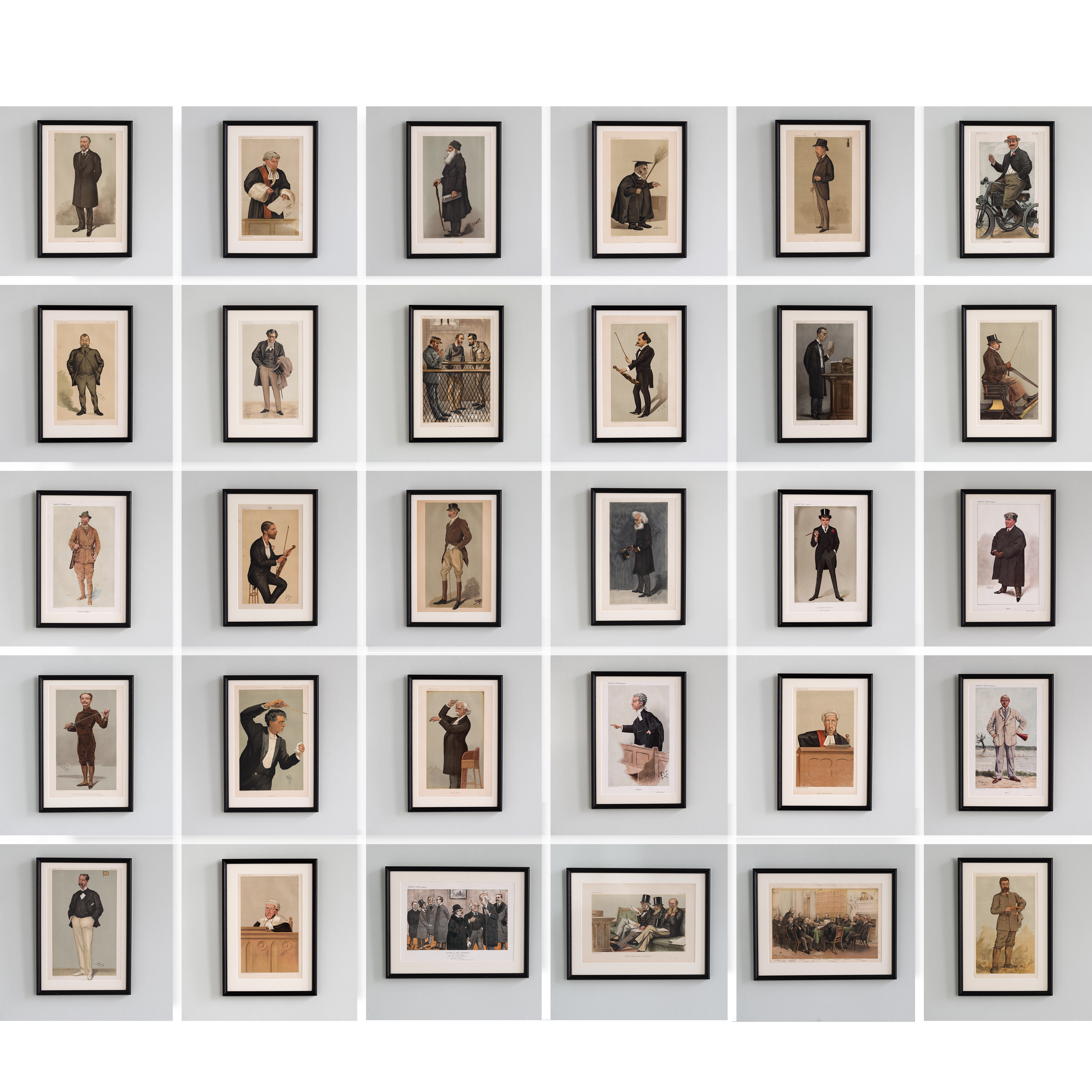War And Peace,
A Vanity Fair Portrait, 1901
Framed Chromolithograph by SNAPP picturing Leo Tolstoy, Russian moralist, novelist and social theorist, author of War and Peace and Anna Karenina.
Tolstoy visited England only once in his life. For sixteen days from the 2nd May 1861 he lodged with the philosopher Alexander Herzen and took in the sights of London as well as attending a reading by Charles Dickens of A Christmas Carol at St James' Hall on Piccadilly. He returned to Russia on the 17th, immediately upon learning of the emancipation of the Russian serfs by the Emperor Alexander II.
£220
In stock



